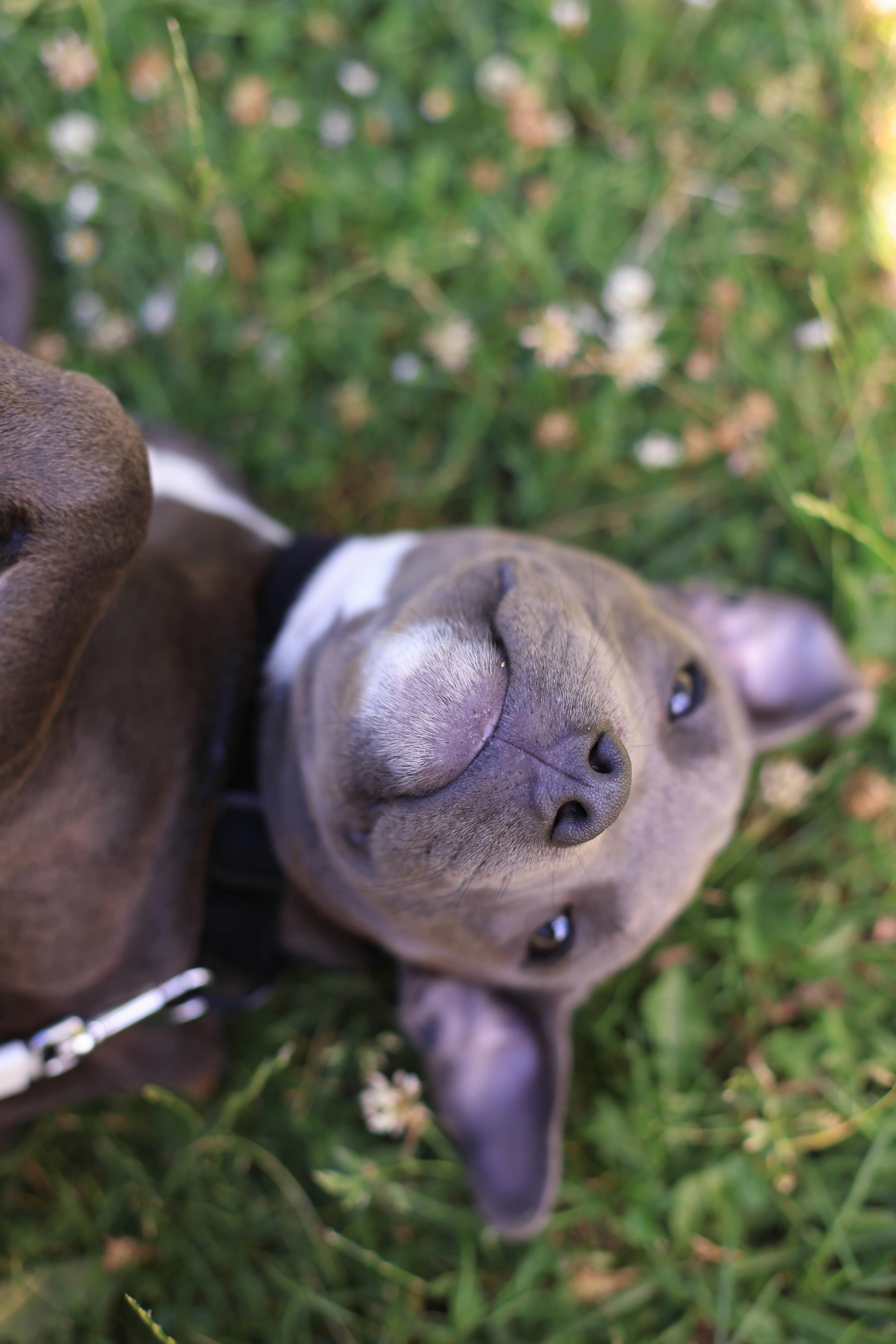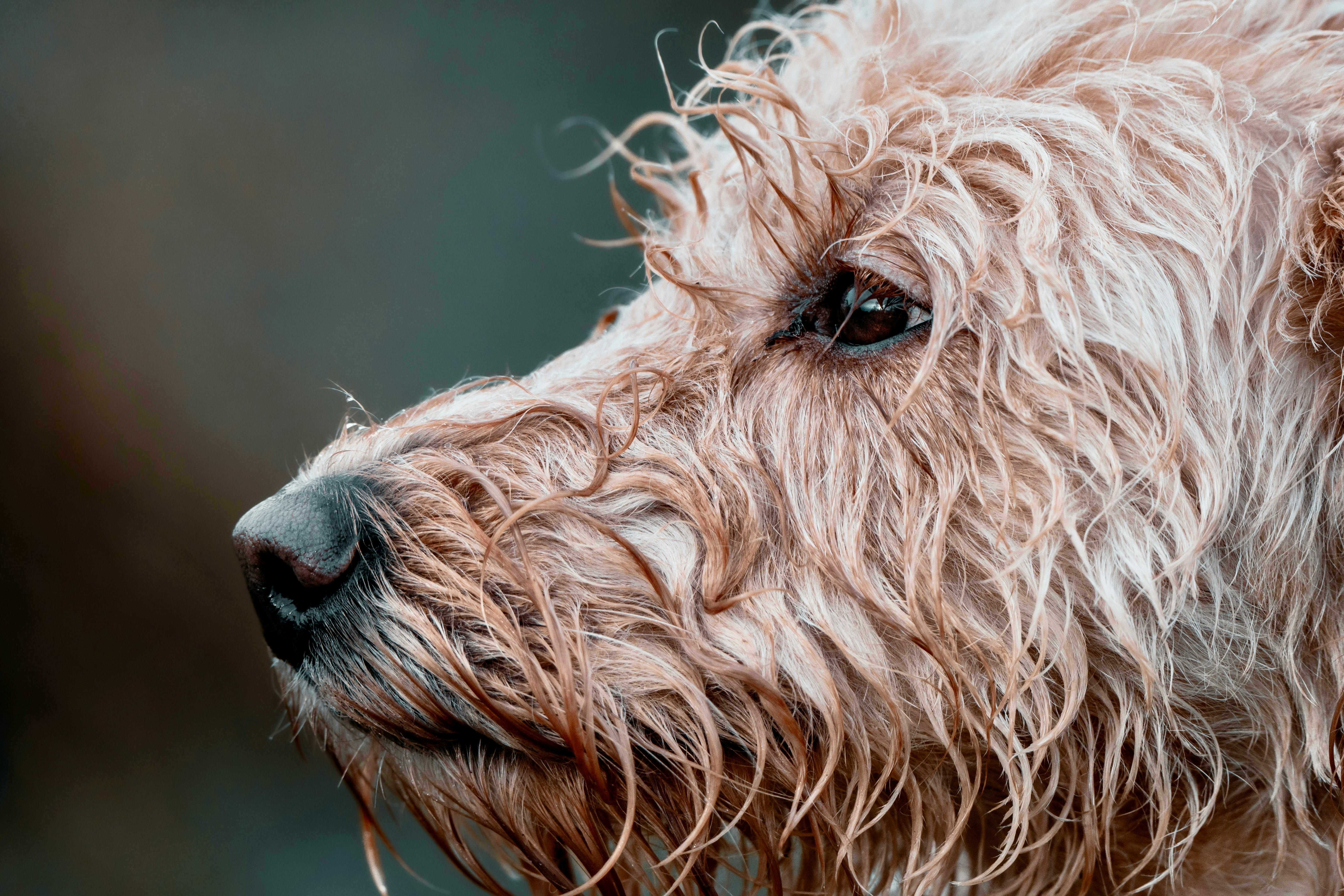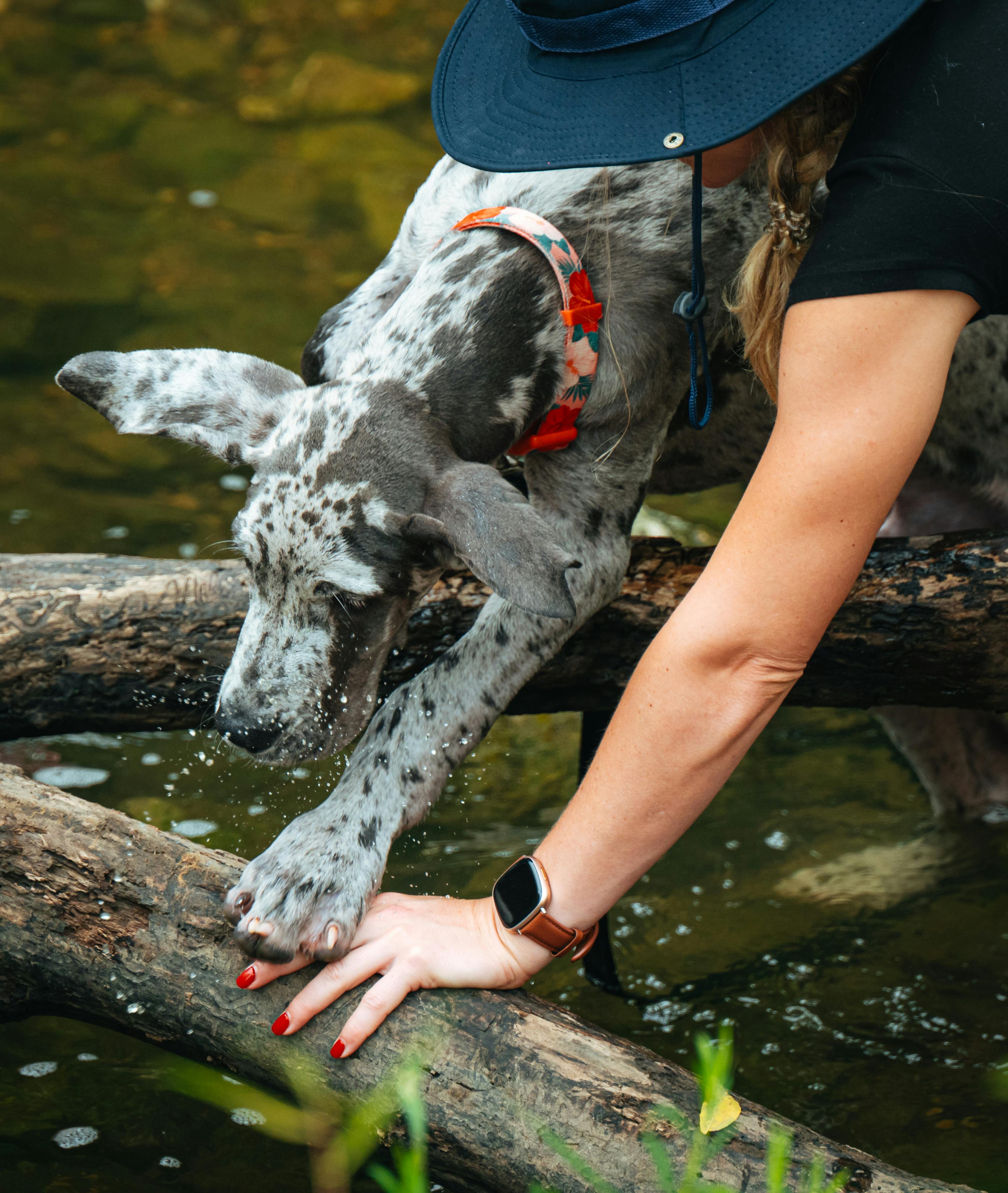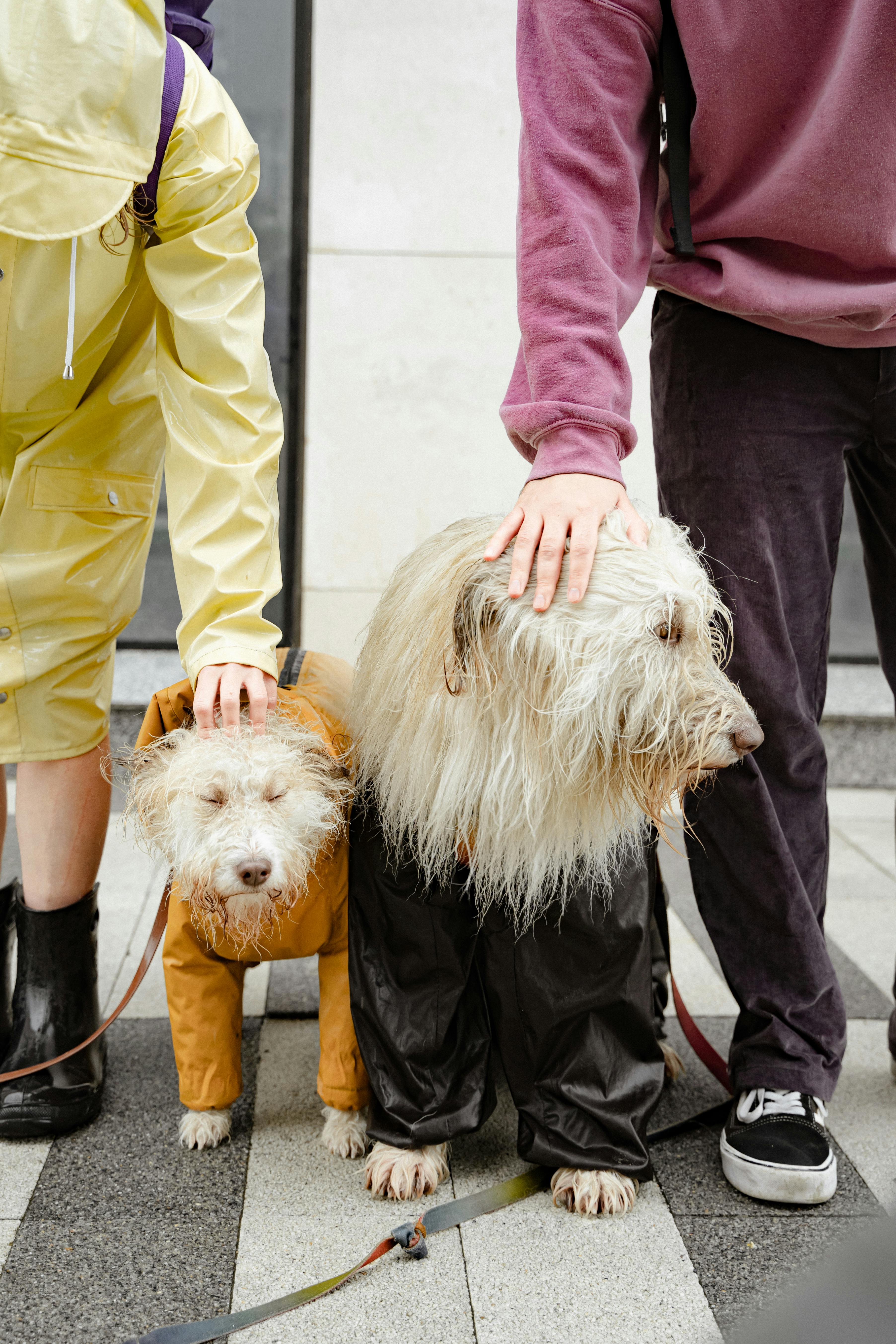Have you ever wondered, why do dogs have wet noses? This intriguing question has puzzled many pet owners and animal enthusiasts alike! A dog’s nose is not just cute; it serves important purposes that can surprise you. Most people think that a dog’s wet nose is a sign of health, but there’s more to it than meets the eye. In this article, we will discover the surprising truth behind this fascinating feature. Is it really about sensing scents, or is there a deeper reason for their moist noses? With their incredible sense of smell, dogs rely heavily on their noses to communicate and explore the world around them. Could this be the key to understanding your furry friend better? Join us as we delve into the science behind this unique characteristic, revealing how a simple wet nose can impact your dog’s behavior and well-being. Plus, we’ll address common myths and provide insights for every dog lover. So, are you ready to uncover the secrets of your pup’s wet nose? Let’s embark on this enlightening journey together!
The Science Behind Canine Noses: Why Are They Wet and What It Means for Your Dog’s Health

Have you ever wonder why dogs have wet noses? It’s one of those quirky features that make our furry friends even more lovable. But the truth is, there’s actually a lot of science behind those damp snouts. Understanding why dogs have wet noses can give you insight into their health and well-being. Let’s dive into some fascinating facts about canine noses and what that moisture means for your pup’s health.
The Anatomy of a Dog’s Nose
A dog’s nose is a complex organ, much more than just a cute feature. The moistness of a dog’s nose comes primarily from the mucus that is produced by the nasal tissues. This mucus serves several purposes:
- Enhance Smelling: Wet noses help trap scent particles, which increases a dog’s ability to smell. Dogs have a sense of smell that is estimated to be 10,000 to 100,000 times more sensitive than humans!
- Temperature Regulation: Just like humans sweat, dogs can regulate their body temperature through their noses. The moisture evaporates, helping to cool them down.
- Health Indicator: A dog’s nose can actually indicate their health. A consistently dry or excessively warm nose could be a sign of illness.
Why Are Dog Noses Wet?
There are several reasons why dog noses are typically wet. Here’s a quick rundown:
- Mucus Production: As already mention, the mucus on their noses captures scents and helps in smelling.
- Saliva: Dogs often lick their noses, adding extra moisture. This licking is instinctual and occurs often when they are curious or excited.
- Environmental Factors: Humidity levels and temperature can affect how moist a dog’s nose is. A hot day can dry it out, while a cool, humid environment keeps it wet.
Health Implications of Nose Moisture
You may be surprise to learn that the condition of a dog’s nose can reflect its overall health. Here’s a breakdown:
- Normal Moisture: A healthy dog will have a moist, cool nose.
- Dry Nose: A dry nose can indicate dehydration, fever, or illness.
- Cracked or Bleeding Nose: This could point to allergies, sunburn, or more serious conditions.
- Excessively Wet Nose: Sometimes, an overly wet nose can also indicate a respiratory issue or infection.
Fun Facts About Dog Noses
Did you know that dog’s noses have unique patterns, just like human fingerprints? Here are some interesting tidbits:
- Dogs have around 300 million olfactory receptors, compared to about 6 million in humans.
- The wetness of a dog’s nose can change throughout the day. It might be drier in the morning and wetter later on.
- Some breeds are known for their particularly wet noses, like the Labrador Retriever and the Bloodhound.
Practical Tips for Dog Owners
Keeping your dog’s nose healthy is part of overall pet care. Here are some simple things to keep in mind:
- Hydration: Make sure your dog drinks plenty of water to maintain their moisture levels.
- Regular Vet Check-ups: Regular visits to the vet can help catch any potential issues early.
- Watch for Changes: Keep an eye on your dog’s nose. If you notice any significant changes in moisture or texture, consult your vet.
Comparison of Dog Nose Types
Here’s a simple comparison of different dog breeds and their nose characteristics:
| Breed | Nose Type | Moistness Level |
|---|---|---|
| Labrador Retriever | Broad, flat | Generally very moist |
| Dachshund | Long, narrow | Usually moist |
| Bulldog | Short, flat | Can be dry |
| Beagle | Medium, broad | Often very moist |
Historical Context of Dog Noses
Historically, dogs have been bred for specific traits, including their noses. Hunting dogs were bred to have better scent abilities, while companion dogs were often selected for their temperament and appearance. The evolution of the dog nose has played a significant role in how they function in various roles today, from service dogs to search-and-rescue canines.
Understanding why dogs have wet noses can not only satisfy your curiosity but also help you monitor your dog’s health. So next time you get a nose nudge from your furry friend, remember that their wet nose is a sign of their incredible smelling abilities and overall health! Keep those noses wet and your dogs happy!
Unveiling the Mystery: Do Wet Noses Indicate an Emotionally Healthy Dog?

Dogs are amazing creatures, and wet noses are one of their most charming features. But have you ever wondered why do dogs have wet noses? Is it only for the cuteness factor, or does it mean something more? Today, we dive into this intriguing question while also exploring if a wet nose can indicate a dog’s emotional health.
The Science Behind Wet Noses
Firstly, wet noses are not a coincidence. Dogs have moist noses for practical reasons. Their noses are covered with a thin layer of mucous which helps to enhance their sense of smell. This mucus captures scent particles, making them more sensitive to odors. Here are some key points about why dog noses are wet:
- Scent Detection: A wet nose can trap odors better, which means dogs can sniff out things we can’t even imagine.
- Temperature Regulation: Dogs sweat through their nose, helping to cool them down. In a way, it’s like their personal air conditioning system.
- Health Indicator: A wet nose is often seen as a sign of a healthy dog. However, it’s not the only indicator of health.
Historical Context of Dog Noses
It’s interesting to note that wet noses in dogs have a long-standing history. Ancient civilizations, such as the Egyptians and Greeks, revered dogs not just for companionship but also for their roles in hunting and protection. Wet noses were likely noted as a sign of their vitality.
What Do Wet Noses Mean?
Now let’s get into the emotional aspect. Many dog owners wonder if the state of their dog’s nose can reveal their emotional health. The truth is, while a wet nose often indicates a healthy dog, it doesn’t directly correlate with their emotional state. Here’s what you should consider:
- Happy Dog: A dog that’s in a good mood may have a wet nose due to excitement and activity.
- Anxious Dog: Conversely, an anxious or stressed dog might have a dry nose. This can be due to their body producing stress hormones, affecting moisture levels.
- Overall Health: If a dog’s nose changes from wet to dry frequently, it could signify health concerns beyond just emotions.
Surprising Facts About Dog Noses
Here are some surprising facts that might just blow your mind:
- Unique Patterns: Just like human fingerprints, dog noses have unique patterns. You can identify dogs by their nose prints.
- Super Smellers: Dogs have as many as 300 million smell receptors compared to humans, who have about 5 million.
- Sense of Taste: Dogs’ taste buds are far less developed than humans. Their sense of smell is what helps them “taste” food.
Comparing Wet and Dry Noses
It’s good to understand the difference between wet and dry noses. Here’s a quick comparison:
| Feature | Wet Nose | Dry Nose |
|---|---|---|
| Health Indicator | Often indicates good health | Could indicate illness or stress |
| Temperature | Helps cool the dog | May indicate overheating |
| Scent Detection | Better at capturing scents | Less effective at scent detection |
Practical Examples of Nose Health
Let’s not forget the practical side of dog care. Regular checks of your dog’s nose can provide insights into their health. Here’s what to look for:
- Color: A healthy dog’s nose is usually black or brown. If it’s red or swollen, it may need a vet’s attention.
- Moisture: If your dog’s nose suddenly becomes excessively dry or cracked, it’s worth investigating further.
- Behavior Changes: If your dog seems lethargic or less playful, even with a wet nose, it may be a sign of underlying issues.
In summary, while wet noses certainly have a fascinating biological function, they don’t solely indicate a dog’s emotional well-being. Instead, they are one piece of a much larger puzzle. By keeping a close eye on your dog’s overall health and behavior, you can ensure that your furry friend stays happy and healthy. Remember, a wet nose may just be the start of understanding your dog’s needs and emotions!
Top 5 Reasons Why Your Dog’s Nose Is Always Moist: Surprising Facts Revealed!

Why do dogs have wet noses? It’s a question that many dog owners have wondered about. The moistness of a dog’s nose is often associated with health and happiness, but there is actually a lot more happening under the surface. So let’s dive into the top 5 reasons why your dog’s nose is always moist, revealing some surprising facts along the way!
1. Natural Cooling Mechanism
Dogs don’t sweat like humans do. Instead, they regulate their body temperature through panting and their noses. A wet nose helps to cool them down, acting as a natural air conditioning system. When a dog’s nose is wet, it can evaporate moisture, which helps to lower the dog’s body temperature.
- Dogs have sweat glands primarily in their paw pads, not on their body.
- A wet nose can help prevent overheating, especially in warm weather.
- Panting, combined with a moist nose, is essential for thermoregulation.
2. Enhanced Sense of Smell
Did you know that a dog’s sense of smell is thousands of times more acute than that of a human? A moist nose plays a critical role in this. The moisture helps to capture scent particles from the air, which allows dogs to detect odors more effectively.
- The surface of a dog’s nose is covered in olfactory receptors.
- A wet nose can absorb scent molecules better than a dry one.
- Dogs often lick their noses to keep them moist, enhancing their ability to smell.
3. Communication Tool
Dogs are social animals, and they use their noses not just to smell but also to communicate with other dogs. A moist nose can indicate excitement or playfulness, and dogs may also use their noses to greet each other.
- A dog with a wet nose might be more approachable to other dogs.
- Licking the nose can signal to other dogs that they are friendly.
- Dogs often smell each other’s noses as a form of greeting.
4. Health Indicator
The moisture level of a dog’s nose can sometimes indicate its health status. A consistently dry nose may not always be a sign of illness, but it can sometimes point to dehydration, fever, or other health issues.
- A healthy dog’s nose may change from wet to dry throughout the day.
- Signs of concern can include excessive dryness, cracks, or other changes in texture.
- If a dog has a dry nose accompanied by other symptoms like lethargy or loss of appetite, consulting a veterinarian is advisable.
5. Environmental Factors
Sometimes, the moisture on your dog’s nose can simply be the result of environmental factors. Humidity, temperature, and even recent activities can affect how wet your dog’s nose is.
- Dogs that play in water will have a wetter nose afterward.
- High humidity can keep a dog’s nose moist for longer periods.
- Conversely, dry climates can lead to a drier nose.
The Bottom Line
So why do dogs have wet noses? It’s a fascinating combination of biology, behavior, and environment that keeps those noses moist. Here’s a quick summary of the main points about the moistness of a dog’s nose:
- Cooling Mechanism: Helps regulate body temperature.
- Sense of Smell: Enhances the ability to detect scents.
- Communication: A social tool for interactions with other dogs.
- Health Indicator: A potential signal of overall health.
- Environmental Factors: Influenced by surroundings and activities.
Understanding these facts can help dog owners appreciate the complexities of their furry friends better. A wet nose isn’t just a cute characteristic; it’s a vital part of a dog’s health and communication. So next time you pat your pup and feel that moist nose against your hand, remember all the amazing reasons behind it! Whether it’s helping them cool down or enhancing their sense of smell, a dog’s wet nose is a remarkable feature.
How a Dog’s Wet Nose Enhances Their Sense of Smell: The Secret Weapon of Canines

Dogs are some of the most beloved companions around the world, and one interesting thing about them is their wet noses. You ever wonder why do dogs have wet noses? It turns out, it’s not just an adorable trait, but it actually plays a key role in how they smell. The wetness of a dog’s nose is like a secret weapon that enhances their sense of smell, making them incredible at detecting scents. Let’s explore this fascinating topic a bit more.
Why Do Dogs Have Wet Noses?
A dog’s nose is wet for several reasons. Here’s a quick list of the main factors:
- Cooling Mechanism: Dogs don’t sweat like humans do. Their noses help cool them down when they pant, which keeps their body temperature in check.
- Scent Detection: A wet nose helps capture scent particles more effectively. The moisture on the nose binds to the odor molecules, allowing dogs to smell better.
- Health Indicator: A wet nose can also be a sign of good health. If a dog’s nose becomes dry, it may indicate illness or dehydration.
- Behavioral Traits: Dogs often lick their noses, which helps to keep it moist and enhances their ability to sniff out interesting smells.
The Science Behind a Dog’s Nose
Dogs have an incredible sense of smell, which is estimated to be anywhere from 10,000 to 100,000 times more sensitive than that of humans. Here’s how a wet nose contributes to this amazing ability:
- Nasal Structure: A dog’s nasal cavity is filled with olfactory receptors, which are specialized cells that detect smells. The more wet the nose is, the better these receptors can function.
- Moisture Capture: When a dog sniffs, the wetness of the nose helps to trap scent particles in the moisture. This allows the olfactory receptors to analyze the scents more effectively.
- Breathing Technique: Dogs use a unique breathing technique, inhaling through their noses while exhaling through their mouths. This helps to keep the scent particles in contact with their olfactory receptors longer.
Historical Context of Dogs’ Noses
Dogs have been companions to humans for thousands of years, and their sense of smell has been utilized in various ways throughout history. Here’s a brief look at how dogs have helped humans with their incredible noses:
- Hunting Partners: Early humans utilized dogs for hunting, as their ability to track scents was unmatched. Dogs helped hunters locate prey by following scent trails.
- Search and Rescue: In more modern times, dogs have been trained for search and rescue missions. Their noses can locate missing persons or detect substances like drugs and explosives.
- Service Animals: Dogs are trained to detect medical conditions like seizures or low blood sugar. Their keen sense of smell can alert their owners to potential health issues.
Fun Facts About Dogs’ Wet Noses
Here’s a few fun facts that you might not know about dogs and their wet noses:
- Dogs have around 220 million olfactory receptors compared to humans, who only have about 5 million.
- The wetness of a dog’s nose can vary throughout the day. It’s usually wetter in the morning and drier in the afternoon.
- Some breeds, like Bloodhounds, are particularly known for their incredible sense of smell, which can be advantageous in tracking scents over long distances.
Comparing a Dog’s Nose to Other Animals
When looking at the animal kingdom, dogs are not alone in having wet noses. However, their abilities stand out. Here’s a quick comparison of other animals:
- Cats: Cats have dry noses and less olfactory receptors than dogs, but they still have a good sense of smell.
- Humans: Humans rely more on vision than smell. Our noses are dry and not as effective for scent detection.
- Bears: Bears have an excellent sense of smell, even better than dogs, but they don’t have wet noses like canines.
Practical Examples of How Dogs Use Their Noses
Dogs rely heavily on their noses in daily life. Here are some practical examples:
- Finding Food: Dogs can smell food from miles away. That’s why they often get so excited when you open a bag of treats!
- Emotional Detection: Dogs can even detect human emotions through scent. They can sense fear or anxiety based on changes in human body chemistry.
- Tracking: Law enforcement agencies often use dogs to track criminals or find missing persons. Their wet noses make them exceptional at picking up scents.
Dogs’ wet noses are more than just a cute feature; they serve vital functions in how dogs interact with their world. Whether they’re tracking scents for a search-and-rescue mission or just sniffing around the park, their incredible olfactory abilities are what make them such remarkable companions. Understanding why dogs have wet noses helps us appreciate these amazing animals even more. So next time you see a dog with a moist nose,
Should You Worry If Your Dog’s Nose Is Dry? Understanding the Signs of Health Issues

Many dog owners often wonder, “Should you worry if your dog’s nose is dry?” It’s a common concern, and rightly so. A dog’s nose can reveal a lot about its health. While a wet nose is often a sign of a happy and healthy pup, a dry nose might not always mean something serious. Let’s dive into understanding the signs of health issues, the reasons behind wet noses, and the surprising truth that every dog owner should know.
Why Do Dogs Have Wet Noses?
Have you ever thought about why dogs have wet noses? It is more than just a cute feature! A wet nose helps dogs in various ways, such as:
- Enhanced Sense of Smell: The moisture on a dog’s nose helps to capture scent particles, making it easier for them to detect smells. This is why dogs can sniff out things we can’t even imagine.
- Temperature Regulation: Dogs do not sweat like humans. Instead, they regulate their body temperature through their noses. A wet nose can help cool them down, especially in warmer weather.
- Communication Tool: Dogs use their noses to communicate with each other and with humans. A wet nose can signal friendliness or excitement.
What Does a Dry Nose Mean?
A dry nose in dogs does not always indicate a serious problem. However, it can be a sign of several health issues. Here’s a quick look at some common reasons why a dog’s nose might be dry:
- Dehydration: Just like humans, dogs need water to stay hydrated. A dry nose can indicate that your dog is not getting enough water.
- Health Issues: In some cases, a dry nose might suggest underlying health problems. These can include fever, allergies, or even skin conditions.
- Environmental Factors: Sometimes, the weather can play a role. Hot and dry climates can lead to a dry nose, as can the heating inside homes during winter.
Signs to Watch For
If your dog’s nose feels dry, it’s crucial to observe other signs that could indicate health issues. Here’s a list of symptoms to be aware of:
- Lethargy: If your dog is less active than usual, it might be a sign something’s wrong.
- Loss of Appetite: A sudden decrease in eating habits can indicate illness.
- Vomiting or Diarrhea: Digestive issues can often accompany other health problems.
- Coughing or Sneezing: Respiratory issues may be present if your dog shows these symptoms.
When Should You Be Concerned?
It’s always better to err on the side of caution. Here’s when to consider contacting a veterinarian:
- If the dry nose persists for more than a day or two.
- If your dog shows additional symptoms like those listed above.
- If the nose appears cracked or bleeding.
Comparison Table: Wet Nose vs. Dry Nose
Here’s a quick comparison table to help you understand the differences between a wet and dry nose in dogs:
| Feature | Wet Nose | Dry Nose |
|---|---|---|
| Scent Detection | Better scent detection | Can diminish scent ability |
| Temperature Control | Helps cool down | May indicate overheating |
| Health Indicator | Generally healthy | May signal dehydration or illness |
| Common Causes | Normal behavior | Dehydration, allergies, illness |
Fun Facts About Dog Noses
- Did you know that a dog’s sense of smell is between 10,000 to 100,000 times more sensitive than humans?
- Each dog has a unique nose print, much like human fingerprints. This means, just like you, your dog’s nose can be used to identify them.
- Dogs can even detect diseases like cancer and diabetes through their sense of smell!
In the end, while a dry nose might not always be a cause for concern, it’s essential to pay attention to your dog’s overall health. If you notice any unusual behavior or additional symptoms, don’t hesitate to reach out to a veterinarian. They can provide the best advice tailored to your furry friend. Remember, the health and happiness of your dog is what matters the most!
Curious Canine Facts: Why Do Dogs Have Wet Noses? The Truth Behind This Common Trait

Dogs are known for many things, like their loyalty, playful nature, and those big, puppy-dog eyes. But one of their most curious traits is their wet noses. You might have wondered, why do dogs have wet noses? It’s a question that many dog owners and enthusiasts ask. Let’s delve into the surprising truth behind this common characteristic of our furry friends.
The Science Behind Wet Noses
First off, a dog’s nose is moist for a reason. It helps them to smell better! Dogs have an incredible sense of smell, and their nose plays a major role in that. When a dog’s nose is wet, it can trap more scent particles. This helps them to detect different odors more effectively.
Here’s how it works:
- Moisture: The wetness of the nose helps to absorb scent particles from the air.
- Temperature Regulation: Dogs can also regulate their body temperature through their noses, as the moisture evaporates, it cooling them down.
- Sensory Function: A wet nose enhances the sensory receptors and improves their ability to detect smells.
Evolutionary Perspective
Looking back through history, canines evolved from wolves. The wet nose trait likely provided survival advantages. Wolves and their descendants relied heavily on their sense of smell for hunting and navigation. A wet nose would have allowed them to track prey more effectively.
- Survival: In the wild, being able to smell better means finding food and avoiding danger.
- Pack Communication: Dogs also communicate with each other through scent. A wet nose helps in this form of communication.
Anatomy of a Dog’s Nose
Understanding the anatomy of a dog’s nose gives insight into why it’s wet. Here’s a quick breakdown of its parts:
- Nasal Cavity: Contains scent receptors.
- Mucous Membrane: Keeps the nose moist.
- Scent Glands: Produce secretions that help with scent detection.
Common Myths About Wet Noses
There are several myths surrounding the reasons why dogs have wet noses. Some of the most common ones include:
- Health Indicator: Many people believe that a wet nose always means a dog is healthy. While it can be a sign of good health, it’s not always the case. Some dogs may have dry noses due to various reasons such as allergies or dehydration.
- Temperature Check: Another myth is that a cold nose indicates a dog is sick. In reality, dogs’ noses can vary in temperature and wetness regardless of their health status.
Why Are Some Dogs’ Noses Drier Than Others?
Not all dogs have the same level of moisture on their noses. Several factors can influence this, including:
- Breed: Certain breeds naturally have drier noses. For instance, breeds like Bulldogs may have less moisture than a Labrador Retriever.
- Environment: Dogs living in dry climates may experience drier noses compared to those in humid environments.
- Health Conditions: Certain health conditions can lead to changes in a dog’s nose moisture. If a dog has a persistently dry nose, it may be worth a trip to the veterinarian.
Fun Facts About Dogs and Their Noses
Here are some interesting and fun facts about dogs’ noses that you might not know:
- Unique Prints: Just like human fingerprints, each dog’s nose print is unique. This could potentially be used for identification!
- No Taste Buds: Dogs have very few taste buds compared to humans, so they rely on their sense of smell to enjoy their food.
- Scent Discrimination: Dogs can detect certain scents at incredibly low concentrations, as low as one part per trillion!
Keeping Your Dog’s Nose Healthy
Taking care of your dog’s nose is important. Here are some tips to ensure its health:
- Hydration: Make sure your dog is drinking enough water.
- Regular Check-Ups: Visit the vet for routine health checks to monitor any changes in your dog’s nose condition.
- Environmental Care: If you’re in a dry climate, consider using a humidifier at home to help keep your dog comfortable.
The wet noses of dogs are not just an adorable feature; they serve several important functions. From improving their sense of smell to regulating temperature, understanding this trait helps us appreciate our canine companions even more. So next time you give your pup a pat on the head, take a moment to admire that wet nose and all the amazing things it does!
The Role of Moisture in Dog Communication: How a Wet Nose Plays a Part in Their Language

Have you ever noticed your dog’s nose? It’s often wet, and there’s a reason for that. Dogs communicate in a variety of ways, and their noses play a significant role in how they express themselves. The moisture on a dog’s nose isn’t just for show; it serves essential purposes in their interaction with the world. Understanding why do dogs have wet noses can help you appreciate the fascinating ways these furry companions communicate.
The Science Behind a Dog’s Wet Nose
A dog’s wet nose is more than just an adorable feature. Scientifically speaking, the moisture has multiple functions:
- Enhanced Smell: Dogs have an extraordinary sense of smell, estimated to be 40 times better than humans. The moisture on their nose helps to capture scent particles from the air, making it easier for them to analyze their surroundings.
- Temperature Regulation: Just like humans sweat to cool down, dogs lose heat through their noses. The wetness cools them down, helping to maintain their body temperature.
- Health Indicator: A dog’s nose can also be an indicator of their health. A healthy dog typically has a cool, moist nose. If it becomes dry or excessively warm, it might signal something’s not right.
Historical Context of Dog Communication
Dogs have been companions to humans for thousands of years. Historically, they’ve served as hunters, herders, and protectors. Over time, these roles have shaped how dogs communicate with each other and with humans.
In ancient times, people noticed that dogs used their noses not just for smelling food but also for social interactions. They would nuzzle each other or humans with their wet noses, which is a natural way of expressing affection or curiosity.
Why Do Dogs Have Wet Noses?
Here are some reasons that explain why your dog’s nose is often wet:
- Scent Detection: The moisture increases the ability to absorb scents.
- Cooling Mechanism: Helps dogs regulate body temperature.
- Social Interaction: A wet nose is often used to greet others in a friendly manner.
- Health Monitoring: A change in the nose’s moisture can suggest health issues.
How Dogs Use Their Noses in Communication
Dogs are not just using their noses to smell; they are also communicating with each other. Here’s how:
- Greeting: When dogs meet, they often sniff each other’s noses. This is a way of saying hello and getting to know one another.
- Submissiveness: A submissive dog may nuzzle another dog’s nose as a sign of respect or deference.
- Play: Wet noses can be part of a playful interaction between dogs. They might nudge each other with their noses, inviting a game.
The Role of Moisture in Dog Behavior
Moisture isn’t just a physical characteristic; it influences behavior too. For example:
- Curiosity: Dogs often use their noses to explore new environments. If you take your dog to a park, you’ll see them sniffing around to gather information.
- Social Cues: Dogs read each other’s body language and scents, which is crucial for understanding social dynamics among them.
- Emotional Connection: When a dog nudges you with their wet nose, it can be a sign of affection or a request for attention.
Common Misconceptions About Wet Noses
Despite popular beliefs, there are some myths surrounding wet noses:
Myth: A dry nose means a dog is sick.
- Reality: Dogs can have dry noses for various reasons, including weather or after sleeping.
Myth: All dogs have wet noses all the time.
- Reality: Some breeds naturally have drier noses, such as bulldogs.
Myth: Wet noses are a sign of happiness.
- Reality: While a wet nose can indicate a healthy dog, it doesn’t always correlate with their emotional state.
Practical Tips for Dog Owners
To keep your dog’s nose healthy, consider these tips:
- Hydration: Ensure your dog is well-hydrated, as it can affect their nose moisture.
- Regular Vet Check-ups: Monitor any changes in your dog’s nose during vet visits.
- Avoid Irritants: Keep your dog away from smoke or harsh chemicals that could dry out their nose.
Understanding the role of moisture in dog communication can deepen your relationship with your canine friend. The next time you see your dog with that wet nose, remember it’s not just cute—it’s a vital part of how they interact with the world. Moisture in their noses plays a significant part in their ability to communicate, connect, and express their needs. So, the next time you’re wondering why do dogs have wet noses, just know that it’s all part of their fascinating language!
Exploring the Connection Between Wet Noses and Dog Behavior: What Pet Owners Need to Know

Dogs are some of the most beloved pets in the world, and their wet noses are often a source of curiosity for many pet owners. Why do dogs have wet noses? This question not only reflects an interest in dog anatomy but also has implications for understanding canine behavior. In this article, we explore the connection between wet noses and dog behavior, and what pet owners should know about these fascinating features.
The Science Behind Wet Noses
A dog’s nose is covered with a thin layer of mucus, which helps to enhance their sense of smell. When the nose is wet, it can trap more scent particles, making it easier for dogs to detect different odors. This ability to smell is crucial for dogs; they have up to 300 million scent receptors compared to a human’s mere 6 million. The wetness of their noses is essential for their survival and daily experiences.
- Canine noses are more sensitive than ours, and their wetness plays a role in that.
- The moisture helps dogs to cool down, as they do not sweat like humans.
- A wet nose can indicate a dog’s health; if it’s dry or cracked, it may be a sign of dehydration or illness.
Why Are Dogs’ Noses Wet?
So, why exactly do dogs have wet noses? There are several reasons for this phenomenon, and they range from evolutionary advantages to basic health indicators.
- Enhanced Smell: The moisture helps to dissolve scent particles, making it easier for dogs to sniff out scents.
- Cooling Mechanism: Dogs do not sweat like humans. A wet nose can help them regulate their body temperature.
- Communication Tool: Dogs often use their noses to gather information about their environment and other animals. A wet nose can convey a certain level of agility and readiness.
Historical Context of Dog Noses
Dogs have been companions to humans for thousands of years. Their sense of smell has been utilized in various ways throughout history, from hunting to search and rescue operations. Ancient civilizations recognized the importance of a dog’s nose, and they bred dogs specifically for traits that enhanced this ability.
- Hunting Breeds: Dogs like Bloodhounds and Beagles are known for their exceptional sense of smell, which is partly due to their wet noses.
- Working Dogs: In modern times, dogs are trained to detect drugs, explosives, and even certain diseases, demonstrating the fundamental role their noses play in various tasks.
Behavioral Connections
The wetness of a dog’s nose can also be tied to their behavior. A wet nose can indicate a dog’s emotional state or health condition.
- Excitement and Playfulness: When a dog is excited or ready to play, their nose may feel wetter. This can be an indicator of a happy and healthy pet.
- Stress Indicators: Conversely, if a dog is stressed or anxious, their nose may become dry. This change can be a signal for pet owners to pay attention to their dog’s emotional well-being.
Practical Tips for Pet Owners
Knowing about the connection between wet noses and dog behavior can help you take better care of your furry friend. Here are some practical tips for pet owners:
- Regular Check-Ups: Make sure to check your dog’s nose regularly. A sudden change in moisture levels could indicate health issues.
- Stay Hydrated: Ensure your dog has access to fresh water at all times. Dehydration can lead to a dry nose.
- Observe Behavior: Pay attention to your dog’s behavior. If you notice changes in their energy levels or mood, it may be worth consulting a veterinarian.
Fun Fact About Dog Noses
Did you know that a dog’s nose print is unique, much like a human fingerprint? This unique pattern can actually be used for identification purposes.
Final Thoughts
Exploring the connection between wet noses and dog behavior is not only a fun topic but also an essential part of being a responsible pet owner. Understanding why dogs have wet noses, and what that means for their health and behavior, can make a significant difference in your relationship with your dog. By keeping an eye on your dog’s nose, you can gain insight into their overall well-being and happiness. Remember, a wet nose can be a sign of a happy dog, but it’s always important to look at the whole picture when evaluating your furry friend’s health.
Wet Noses and Temperature Regulation: How Dogs Use Their Noses to Stay Cool

Have you ever wondered why dogs noses are always wet? It’s not just for show or because they are constantly sticking their faces in the water bowl. Wet noses play a crucial role in how dogs regulate their body temperature and interact with the world around them. In this article, we’ll dive deep into the science of wet noses, looking at how they help dogs stay cool and the surprising truth behind why they are wet in the first place.
Understanding the Anatomy of a Dog’s Nose
A dog’s nose is a complex organ, specially designed for their unique needs. Unlike humans, dogs have a much higher number of scent receptors in their noses. In fact, dogs have around 300 million scent receptors compared to a human’s 5 million. This makes their sense of smell incredibly powerful. But why does this wetness matter?
- Moisture Retention: The wetness helps to capture scent particles from the air, making it easier for dogs to identify smells.
- Cooling Mechanism: Just like how sweating helps humans cool down, the moisture on a dog’s nose evaporates, which helps to regulate their body temperature.
- Health Indicator: A dog’s nose can also indicate their health. A wet, cool nose usually means a dog is healthy, while a dry, warm nose could signal a problem.
How Dogs Use Their Noses to Stay Cool
Dogs don’t sweat like humans do. Instead, they rely on other methods to keep their body temperature in check. Here’s how their wet noses contribute to this process:
- Evaporation: When the moisture evaporates from their noses, it cools the blood vessels just below the surface. This helps lower their overall body temperature.
- Panting: Dogs primarily cool down by panting, but their noses provide an additional means of temperature regulation. The moisture helps enhance the cooling effects of panting.
- Scent Detection: Staying cool while sniffing around can be crucial. A dog may need to explore their environment extensively, and their wet noses help them do this effectively.
Why Do Dogs Have Wet Noses? The Surprising Truth!
The common belief that a dog’s nose is always wet due to licking is only partly true. While dogs do lick their noses, there’s more to the story. Here are some surprising facts:
- Glandular Secretion: Dogs have specialized glands in their noses that produce a thin layer of mucus. This natural secretion keeps their noses moist and aids in scent detection.
- Behavioral Aspects: Dogs often lick their noses after eating or drinking or even when they are anxious. This behavior can enhance the wetness, but it’s not the only reason their noses stay wet.
- Environmental Factors: Weather and humidity also plays a role. On hot, humid days, a dog’s nose may feel particularly wet because of the condensation from the air.
Common Myths About Dog Noses
There are a lot of myths surrounding dog noses that can lead to misconceptions. Let’s debunk some of these:
- Myth: A Dry Nose Means a Sick Dog: Not true! While a persistently dry nose can indicate issues, many healthy dogs have dry noses from time to time.
- Myth: Dogs Only Lick Their Noses When They’re Thirsty: Dogs lick their noses for various reasons, including curiosity, anxiety, or simply to keep it clean.
- Myth: All Dogs Have the Same Nose Temperature: This is false. A dog’s nose temperature can vary depending on breed, activity level, and even the time of day.
The Role of Breed in Nose Wetness
Different dog breeds may have varying characteristics regarding their noses. For instance:
- Brachycephalic Breeds: Breeds like Bulldogs and Pugs have shorter noses, which can affect their ability to cool down effectively.
- Working Breeds: Breeds such as Bloodhounds or German Shepherds have longer snouts, often leading to better cooling mechanisms.
- Mixed Breeds: Each mixed breed may show different nose characteristics, depending on their parent breeds.
Practical Tips for Dog Owners
As a dog owner, it’s important to monitor your furry friend’s health. Here are some practical tips:
- Hydration: Always ensure your dog has access to fresh water, especially during hot weather.
- Cooling Mats: Consider using cooling mats or fans to help your dog stay comfortable in warmer months.
- Regular Vet Check-ups: Regular health check-ups can help catch any potential issues early.
Understanding why dogs have wet noses and how they use them to regulate their temperature is fascinating. It highlights the incredible adaptations dogs have developed over time to survive and thrive. Whether you’re a dog owner or simply a dog lover, knowing these facts can deepen your appreciation for these loyal companions. Remember, a
Myths vs. Facts: Debunking Common Misconceptions About Dogs and Their Wet Noses

Dogs are often considered our best friends, but they come with lots of quirks that can confuse and fascinate. One of the most common questions asked is, “Why do dogs have wet noses?” Along with this question, there’s a heap of myths floating around about this canine characteristic. So let’s dive into the science and the stories behind dogs and their wet noses.
The Science Behind Wet Noses
First off, you might be wondering if having a wet nose is normal for dogs. Well, yes! Most dogs do have wet noses, and it’s not just for looks. A dog’s nose is moist for several reasons:
- Temperature Regulation: Dogs sweat through their paw pads, but their noses also play a role in cooling them down. A wet nose can help them stay comfortable, especially on hot days.
- Scent Enhancement: The moisture on a dog’s nose helps to capture scent particles in the air. This is why dogs are such good sniffers! A wet nose allows them to detect a wider range of smells, which is crucial for their communication and hunting instincts.
- Health Indicator: A change from wet to dry can indicate health issues. A healthy dog’s nose is usually moist, but if it becomes dry or cracked, it might be worth checking with a vet.
Myths About Dog Noses
There are many myths about why dogs have wet noses. Let’s break down some of the common misconceptions:
Myth: A dry nose means a dog is sick.
Fact: While a consistently dry nose can be a sign of illness, many factors can cause a dog’s nose to dry out. Weather, activities, and even sleep can change the moisture level.Myth: Dogs’ noses are wet because they lick them.
Fact: Dogs do lick their noses, but that’s not the primary reason they’re wet. Their noses are naturally moist due to glands that produce mucus, which helps with scent detection.Myth: All dogs have wet noses.
Fact: Not all dogs have the same nose moisture. Some breeds, like bulldogs or pugs, might have drier noses, but that doesn’t mean they’re unhealthy.Myth: A wet nose means a dog is happy.
Fact: Dogs can have wet noses whether they are happy, sad, or even sick. It’s more about their biological makeup than their emotional state.
Historical Context of Dog Noses
Historically, dogs have been companions to humans for thousands of years, and their wet noses have been a topic of discussion for just as long. Ancient cultures recognized the unique abilities of dogs to sniff out prey, which likely led to the domestication of wolves. Over generations, dogs have been bred for specific traits, including their keen sense of smell.
Fun Facts About Wet Noses
Here are some interesting tidbits about dog noses you might not know:
- Dogs have about 300 million smell receptors, compared to humans who only have around 6 million.
- The shape and size of a dog’s nose can actually affect their sense of smell. Breeds like Bloodhounds have incredible sniffing abilities due to their long, wet noses.
- The texture of a dog’s nose can vary significantly between breeds. Some are smooth, while others may be bumpy or wrinkled.
Practical Examples and Comparisons
Let’s compare dog noses with other animals:
- Cats: Cats have a slightly drier nose than dogs. They rely more on their whiskers and other senses to navigate their environment.
- Humans: Humans have no sense of smell compared to dogs. Dogs can smell substances at concentrations nearly 100 million times lower than humans can.
The Importance of Dog Noses
Understanding why dogs have wet noses can help pet owners monitor their dog’s health. It’s a simple way to keep tabs on their well-being. When adopting or caring for a dog, knowing the normal conditions of their nose can help recognize when something’s off.
- Check Regularly: Make it a habit to check your dog’s nose every day. If it’s unusually dry for a long time or shows signs of cracking, it may be time for a vet visit.
- Hydration: Ensure your dog stays hydrated, particularly in hot weather, as hydration affects nose moisture.
Navigating the world of dog care can be overwhelming, but knowing the facts about their wet noses can make things a bit clearer. Dogs are more than just their adorable features; they are complex creatures with unique needs. By understanding the truth about their wet noses, you can better appreciate and care for your furry friend.
Conclusion
In conclusion, the wet noses of dogs serve several important functions that contribute to their well-being and communication. The moisture on their noses enhances their sense of smell, allowing them to detect scents more effectively—a crucial aspect of how they interact with their environment. Additionally, a wet nose helps to regulate body temperature and keeps them cool, especially in warm weather. While a wet nose is often considered a sign of health, it’s important to remember that variations can occur, and pet owners should monitor their dog’s overall health. Understanding the biology behind your dog’s nose not only deepens your bond with them but also encourages responsible pet ownership. So the next time you give your furry friend a scratch behind the ears, take a moment to appreciate the fascinating nature of their wet nose and what it reveals about their unique physiology.

